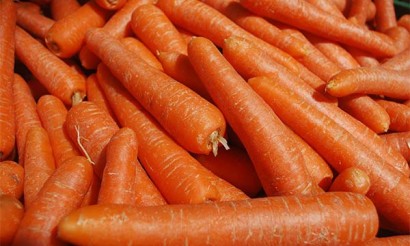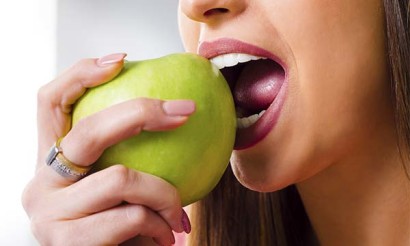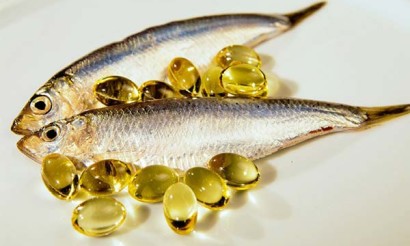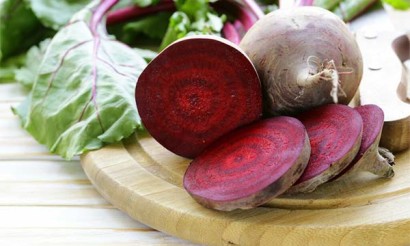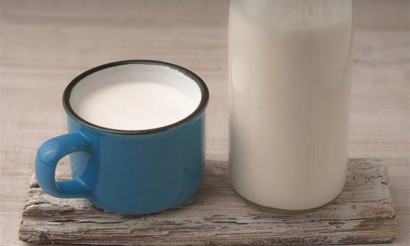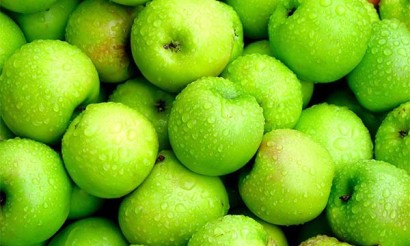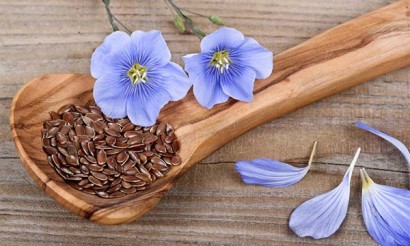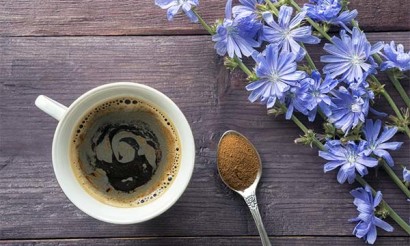Halva when breastfeeding: the benefits and harms
Halva - the most popular oriental sweet, which is mentioned in many Arab tales. According to historians, it is a delicacy that appeared in the V century, and invented it the Persians. In ancient times, halva was eaten by concubines in the harems of the Eastern rulers, but today this delicious and very caloric product is available to everyone.
- Can I eat halva when breastfeeding
- In the first month
- In the second month
- How to Eat Halva
- How much can I eat per day?
- Can I eat at night and on an empty stomach
- The benefits of halva when breastfeeding
- What is the healthiest halva
- Sunflower
- Sesame
- Peanut
- What is the danger of halva during lactation?
- How to introduce halva to the diet of a nursing mother
- How to make halva at home
- The classic recipe of peanut halva
- Recipe for Uzbek halva
- Sunflower halva without added sugar
It is interesting that in Egyptian cuisine halva is presented as a separate dish. There it is served for breakfast with bread and butter. A tasty and very filling delicacy, it really quickly satisfies hunger and satiates the body with vitamins and minerals. That is why halva was and is a temptation for sweet eaters of all ages.
It is clear that such a valuable product is not ignored by nursing mothers. After all, in a period of strict gastronomic bans so want to please yourself with a delicate taste of your favorite treat. But for the safety of the baby nursing women have to ruthlessly cut out of their diet, even quite neutral products, not to mention sweets. Therefore, most breastfeeding women only in dreams allow themselves to dream about an oriental delicacy. And in vain.
Halva is on the list of authorized products when breastfeeding. Moreover, doctors even recommend to eat it in small amounts to breastfeeding women to maintain normal lactation. Let's consider when and how to introduce halva to the diet, how the baby and mother will benefit from it, and how to prepare a sweet dessert yourself.
Can I eat halva when breastfeeding?
Mother's milk is considered the most valuable natural product. The longer the mother breastfeeds her child, the better the health of the baby. Breastfed babies are known to be ahead of their peers in mental and physical development. They get their teeth erupted in time, and they start walking early. But the main advantage of mother's milk is that, in fact, it is an immunomodulator. That is, these babies are less sick. That's why all pediatricians in the world are actively promoting breastfeeding. On the other hand, the safety of breast milk is provided by the set of products that make up the diet of a nursing mother.
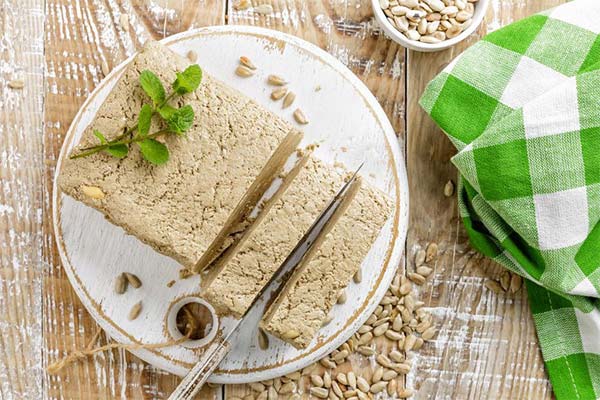
Any deviation in the diet can turn a useful product into a poison. Therefore, each breastfeeding mother has very high requirements for its menu. But with all the restrictions that exist woman must make its diet varied and full.
And in this matter, she can help such small culinary joys like melting in your mouth halva. Women's craving for sweets during the nursing period is very simple: a nursing mother during this period expends a lot of energy, and treats help to replenish reserves. Even the process of breastfeeding itself requires a lot of energy. A piece of sweet halva energizes and improves your mood, because carbohydrates have an unusual property - they activate the synthesis of serotonin, which is called the "hormone of happiness. Serotonin in sufficient quantities contributes to normal sleep, increases vitality, and reduces soreness. Therefore, any breastfeeding mommy needs carbohydrate products. Since the attitude toward sweets in dietetics is not entirely loyal, then of all the sweet "evils" halva seems the safest delicacy.
In culinary terms, halva is a fairly caloric dessert. There are a huge number of recipes for the oriental sweet, but all necessarily present nuts, caramel, seeds, sugar or honey. Some confectioners add dried fruit, such as raisins. All of the above components are rich in minerals and vitamins, and nuts and seeds are known to stimulate lactation. Therefore, women who have a problem with breast milk should definitely add halva to their diet. So, we found out that the oriental sweet is useful both for the baby, and for the mother. Now it remains to clarify at what time it is possible to introduce the natural product into the diet.
In the first month
In the first weeks after childbirth, the female body is recovering. Therefore, it is undesirable at this stage to deviate from the usual diet. In addition, the baby is just beginning to get used to the new conditions of existence. His organs and systems are not yet fully formed. The digestive tract can only accept and process breast milk. But with the mother's milk in the body of the baby enter products that can provoke an allergic reaction. Therefore, all the sweets at this time is potentially dangerous for the baby. Renowned pediatrician E. Komarovsky believes that during breastfeeding women should refuse any sweets, including even fruit. But nutritionists and other specialists are not so categorical. They believe that natural treats such as halva, will bring more benefits than harm.
In the second month
We must keep in mind that halva - it is a difficult product, and the digestive system in the first weeks of life can not yet cope with such food, because she has not yet produced enzymes that can break down such food. Therefore, the second month after birth is also not the right time to start culinary experiments. In the best case, with normal health of the mother and baby, you can begin to introduce halva into the diet in tiny portions only after three months. And halva must be of impeccable quality, and as part of a dainty product - a minimum of allergenic ingredients.
How to consume halva
If before pregnancy a woman was absolutely indifferent to halva, but after the birth of the baby decided to add it to her diet, having heard about the useful properties of the product, it is better to abandon the dubious idea. The oriental delicacy is a combination of different ingredients, each of which can be potentially dangerous for the health of the baby. Therefore, it is better to postpone acquaintance with the sweet dessert until 6 or even 8 months.
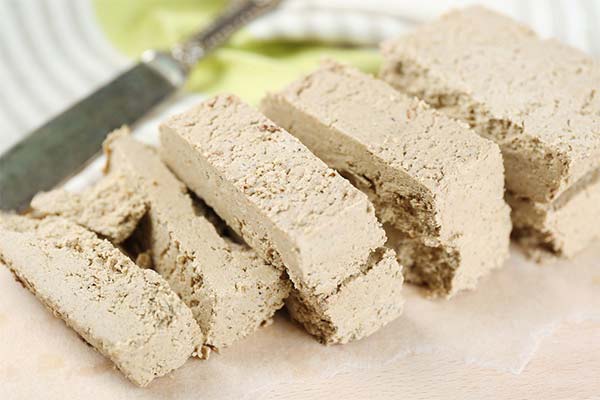
If a woman before pregnancy and during pregnancy allowed herself to eat halva, then you can begin to test the sweet product to raise the emotional background and overall tone. Let us tell you how to do it correctly:
- First, consult with your pediatrician. The doctor will assess the baby's condition, and then decide whether it is possible to start introducing a new product into the menu.
- Next, do the most important thing - choose a quality halva. About store products, we can say that all kinds of halva added flavorings, stabilizers and other not entirely safe additives. Therefore, when choosing a product, you need to give preference to the one that has the least components. And the best way to make halva yourself. This is not difficult, and the recipe for the treat will be given below.
- Of course, it is more pleasant to eat halva in its pure form, because the delicacy is a self-sufficient product. You should start the acquaintance with a small piece. The tasting is best done on an empty stomach, with the rest of the food tested.
- After the first tasting, observe the baby's condition and skin for two days. If no abnormalities are found, you can repeat the test.
- It is not necessary to get carried away with the oriental sweet. It is enough to enjoy its amazing taste 3-4 times a week.
- You should not experiment with varieties of halva. That is, you can't start with the sunflower product, and then switch to the peanut variety. You need to remember that the most important thing is a safe composition.
Halva refers to the hard-to-digest products. Therefore, the baby may experience cramps in the stomach, increased formation of gas. If such a violation happens, tasting halva should be postponed for two weeks.
How much can I eat a day
Halva - a very caloric product: the energy content of a hundred-gram serving of dainty is about 500 units. However, this figure depends on the composition of the product. In any case, you should not get carried away with halva, even if the baby will take it well. It is unlikely that a woman will want to gain extra pounds during breastfeeding. To satisfy the gastronomic desire to eat enough halva 50-100 grams. Therefore, moms who have a sweet tooth will have to restrain themselves. To avoid temptation, it is better to buy a sweet product in small quantities and immediately divide it into portions.
Do not treat halva as a vitamin product. Oriental delicacy is quite a caloric pleasure, and therefore it should not appear in the menu every day.
Can I eat at night and on an empty stomach?
The most convenient time for eating halva - this is the first half of the day. We have already said that in Eastern countries halva is eaten in the morning. It is spread with butter on bread. Eaten on an empty stomach treat will give a young mother strength and energy. But such a complex and caloric product should not be consumed before going to bed. The body will simply have nowhere to spend the energy received, and it will transfer this valuable resource into fat deposits.
The benefits of halva while breastfeeding
Halva literally translated from Arabic means "sweetness", which once again confirms the main gastronomic value of the product. In addition to the exquisite taste, a popular delicacy has a whole set of health benefits. Depending on the ingredients present in the dessert, the composition differs slightly. But in all varieties, vegetable fats account for one third. In addition to these, in the composition of the sweet product are present:
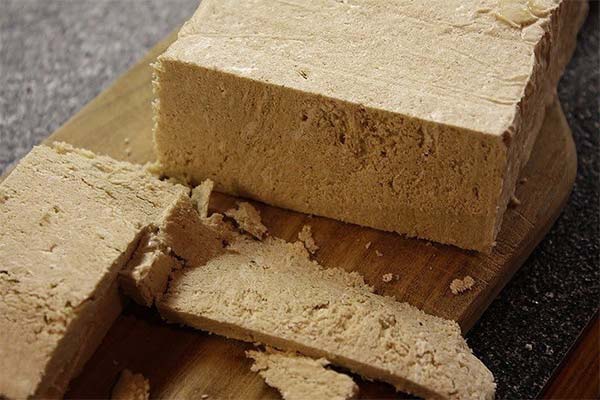
- Nicotinic acid (vitamin PP) is involved in the synthesis of essential acids, ensures the normal condition of blood vessels.
- Riboflavin (B) regulates the thyroid gland.
- Thiamine (B1) supports cardiac function and normal functioning of the digestive system.
- Tocopherol (E) is involved in the production of sex hormones, provides protective functions of the immune system.
- Calcium is a very important mineral involved in the synthesis of hormones, hematopoiesis, and the formation of the child's bone skeleton.
- Magnesium is necessary for the heart muscle and the normal state of the nervous system.
- Iron provides oxygen delivery to tissues, supports normal hemoglobin levels.
- Phosphorus is essential for bone tissue and teeth.
- Sodium supports stable water and pH balance.
All these substances are necessary for the full recovery of the woman's body after childbirth. They are needed by the growing baby. Therefore, it is at least unwise to refuse such a useful product. With the regular use of a young mother halva followed by the following positive changes:
- increase the nutritional characteristics of breast milk;
- Reduce the risk of anemia;
- improve lactation;
- metabolism will be accelerated;
- you will get a good night's sleep;
- digestion will normalize;
- The condition of the skin and hair will change for the better;
- fatigue will disappear without a trace.
And an added bonus to all of these benefits will be a good mood. But all these opportunities will be open to the mother and her baby only in strict compliance with the norms of consumption of sweet dessert.
What is the healthiest halva
In the confectionery business, halva refers to a whole group of sweets that are made on the basis of nuts or seeds. For this purpose, any type of nuts are suitable: almonds, peanuts and pistachios. Consider in detail the features of the most popular varieties of halva.
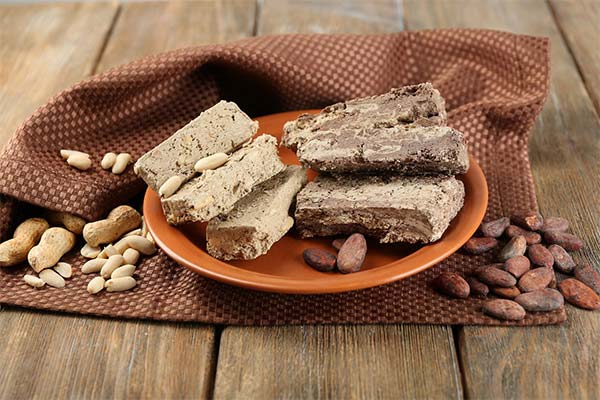
Sunflower .
In the former Soviet Union, this is the most popular type of dainty. For its preparation, sunflower seeds are used, which are rich in the content of vitamin supplements, amino acids, fatty omega acids. For breastfeeding moms, sunflower halva is considered the most successful option for a safe treat. The product will provide the body with the necessary supply of nutrients, as well as support lactation at a normal level.
Sesame
In the classification of food halva with the inclusion of sesame seeds is called "tahini". But the product does not add whole seeds, and used in the manufacture of oil cake. It is known that in this raw material is concentrated a lot of useful substances. In tahin halva a lot of calcium and vitamin B1, there is linoleic acid and many useful minerals. Halva with sesame seeds improves brain function and inhibits the aging process.
The product can serve as a prophylactic against cancer, as sesame has strong anticancerogenic activity. Sesame halva rarely causes allergies. Therefore, dietitians and pediatricians recommend this type of delicacy to nursing moms. But you should not abuse the product anyway, because the caloric value of 470 kcal cannot be considered low.
Peanut
Although the composition of peanut halva is considered the most useful, it is also the most allergenic product. This variety is valued for its high content of folic acid and a large number of vitamins. Peanut halva with regular use will rejuvenate the appearance and strengthen the teeth.
The product literally "spurs" the work of the brain, improving memory and intellectual abilities. The treat is very useful for digestion. But the choice of peanut candy should be taken very seriously, because there is always a risk of buying a substandard product. Therefore, it is best for the young mother herself to be engaged in the preparation of a healthy dessert. At least, in this case, she will have the opportunity still when choosing the ingredients to select peanuts without bitterness. But for the first try this type of halva is not suitable. Familiarity with it is better to postpone closer to a year.
Of course, the choice of product depends primarily on the personal preferences of a nursing woman, but take into account the nuances that we have mentioned here, too.
Important note: All types of halva are considered an ideal product for the prevention of cancer.
What are the dangers of halva during lactation
Despite the great useful potential, halva during breastfeeding in some cases can be an unsafe product. It should be borne in mind that the basis of the delicacy are seeds or nuts, which contain essential components that can cause a baby a severe allergic reaction. It may appear in the form of hives, runny nose, cough. This is at best. In severe cases, it is Quincke's edema and even anaphylactic shock. So approach the use of halva, especially peanuts, should be extremely careful.

In addition to allergic manifestations, the use of oriental sweets by a nursing woman may cause bloating of the baby's tummy or stool disorders. Since the dessert is a caloric product, its use in large quantities can provoke rapid weight gain for the woman herself. In addition to these culinary nuances, it is necessary to take into account the contraindications, of which there are many. So, halva should not be eaten by women who have a history of
- Allergic manifestations, even episodic cases;
- diabetes;
- obesity;
- liver disease;
- chronic pathologies of the stomach and intestines;
- pancreatitis;
- urolithiasis.
We want to draw attention to another important point: since the sweet delicacy is prepared at high temperature (150-300 ° C), sunflower seeds emit toxic substances - cadmium.
How to introduce halva to the diet of a nursing mother
As mentioned earlier, halva is introduced into the diet of the mother gradually. The first time you eat a small slice is enough. You can drink tea or water to wash it down. If the result of the first tasting is satisfactory, it is allowed to take a larger piece the next time. Halva is a mono-product, so it is better to eat it separately, if you want, you can add it to ice cream or yogurt. Now let's focus on how to choose the right product of good quality.
- When choosing a sweet in the store, you need to carefully study the composition. Preference should be given to halva, which has a minimum of ingredients.
- In a quality product, the sweet taste is formed by sugar, honey or molasses. Synthetic sweeteners in halva should not be, as well as flavorings and dyes.
- You need to assess the appearance of the sweet product. If there is moisture on the surface, it means that the product was stored with violations of the rules.
- Breastfeeding mothers should definitely try halva. If there is bitterness in the taste of the delicacy, such a product can cause poisoning.
- The presence of husks is unacceptable. If such a fact is found, then there is reason to believe that the manufacturer has violated the technology of manufacture of the product.
- Darkened halva is also not suitable for consumption. Such a sign indicates that the shelf life of the product has expired.
- If halva is sold by weight, the product should have a layered and fibrous structure.
- Quality halva should not stick to the teeth.
And a few words about the rules of storage. If halva is sold in vacuum packaging, it can be stored in this form for six months. The product in a cardboard container has a shorter shelf life - only two months.
How to make halva at home
Own preparation of a delicious and healthy treat is much more profitable financially. The advantage of this way of satisfying gastronomic needs is that all the health risks in this case are reduced to a minimum. Many young mothers prefer this option. All the more, the cooking process will not take much time. There are an incredible number of recipes for homemade halva. We offer a few of the most popular recipes from this collection.
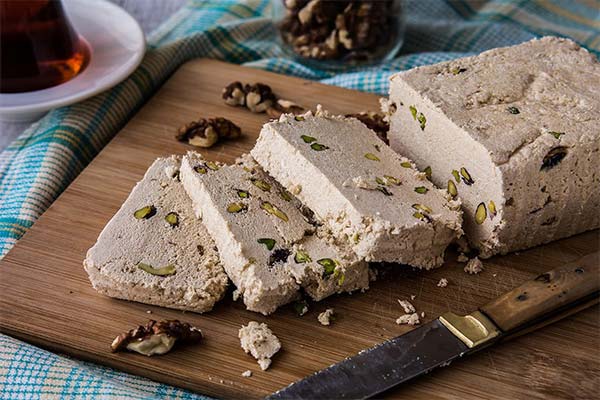
The classic recipe for peanut halva
To prepare the oriental delicacy will require:
- peeled peanuts - a cup;
- flour (wheat) - a cup;
- water - 250 ml;
- vegetable oil - a cup;
- sugar - a full cup.
How to cook:
- First of all, in a pan, fry the peanuts.
- Separately, fry a little flour.
- Peel the peanuts from the husks and send them to a food processor for crushing.
- Now mix the peanut mixture with flour.
- Separately combine the sugar and water. You can add a pinch of vanilla to the future syrup for taste.
- After that, put the resulting mixture on the fire. After boiling, boil the mass for another 5 minutes.
- In the ready syrup add vegetable oil, then enter the dry nut mixture. Everything should be thoroughly mixed.
- At the final stage of cooking, place the mass in molds and slightly crush them.
When the halva cools, you can enjoy its taste.
Recipe of Uzbek halva
Sweet delicacy, cooked according to this recipe, quite deserves the title of the safest product. If you start acquaintance with sweet desserts, then you should definitely cook for the first try it is an Uzbek halva.
You will need the following set of products:
- milk (ideally goat) - 0.5 liters;
- sugar - 50 grams;
- flour - 3 tbsp;
- clarified butter - 1 tbsp.
Scheme of preparation:
- First of all, fry the flour and butter in a pan. The mass should turn brown. Butter can be replaced with butter.
- Then boil milk, dissolve sugar in it.
- Now combine both parts of the Uzbek-style halva. Put the mixture on low heat.
- Boil the mass until it thickens, stirring all the time.
- Add any nuts, if they are already in the diet.
- Pour the hot mass into greased mould.
- After it cools, divide into pieces.
Sunflower halva without added sugar
At the heart of this dietary version of the treat are sunflower seeds. You can buy quality seeds in any store. However, it will have to spend time on their cleaning, because it is not worth buying the peeled seeds.
So, for the safest halva will need:
- seeds - a cup ;
- raisins - 3/4 cup;
- sunflower oil - 3 tbsp.
Algorithm of action:
- In a blender grind the seeds.
- Previously washed and dried raisins send after seeds.
- Add oil to the mass. Again stir it.
- Now form the mass into balls, but you can give any other shape.
You can put the treat in the fridge for a few hours.
The finished dessert has a pleasant taste and rich flavor of sunflower.
Very tasty is halva made with fructose. For a variety of Spartan diet, you can prepare a chocolate-covered treat or homemade waffles with halva. There are many options for culinary delights that meet all the requirements of a dietary diet. But each product should be preliminarily evaluated for the danger of developing allergies.
Conclusion
We have tried to reveal all the secrets of one of the most ancient oriental delicacies. With the rational use in the period of lactation, halva will bring great benefit to a young mother. The components of the dainty product will help to quickly recover from childbirth and replenish nutrients. In addition, the unique composition of halva will take care of the appearance of the woman: it improves the skin, returns the curls vital shine and strength, strengthens the nails. The baby, receiving with milk, valuable nutrients, will also delight his mother with his first successes, because in halva so much useful for the little man.
«Important: All information on this site is provided solely for informational purposes. Before using any recommendations consult with a specialized specialist. Neither the editors nor the authors shall be liable for any possible harm caused by materials."



